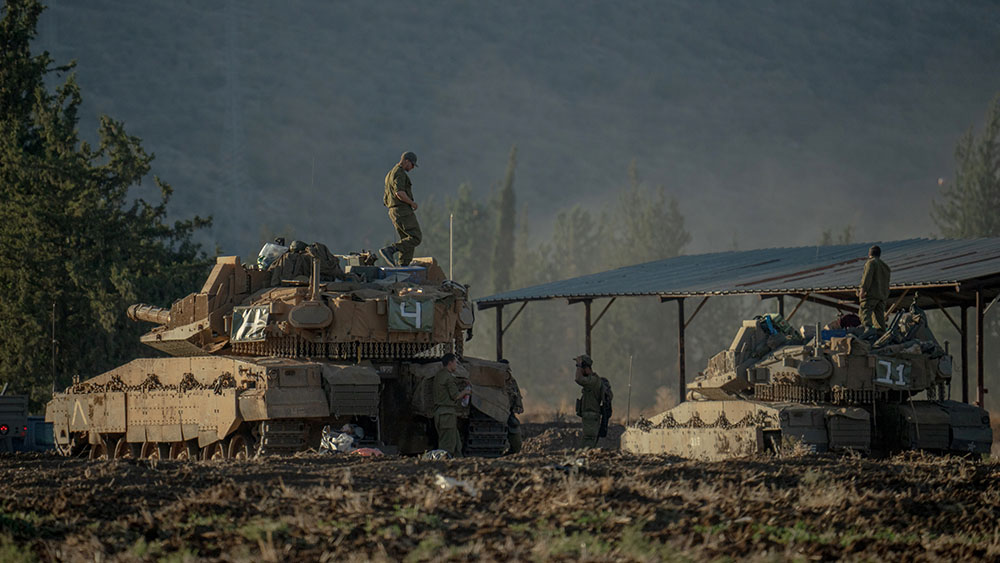
(Related: Speaking of natural disasters, have you checked out the devastation caused by Hurricane Milton in Florida?)The nearly 75K-acre Elk Fire in northern Wyoming is charring wildlife habitat & threatening public safety. Of course, there are also impacts on hunting season & public access. Details from @WGFD➡️https://t.co/dAo6OM5Qc6 pic.twitter.com/6giOtmGC5f
— Rocky Mountain Elk Foundation (@RMEF) October 8, 2024
Park Trail Fire threatens wealthy Jackson Hole resort area
Another area under threat of wildfire destruction is Jackson Hole, arguably Wyoming's most posh asset. This picturesque enclave that serves as a playground for the rich is threatened by the Pack Trail Fire, which has consumed about 60,000 acres thus far. Firefighters are preemptively trying to save the wealthy area from destruction by creating protective barriers in the Gros Ventre River drainage area as smoke pours into Jackson Hole. For most of the summer, air quality in Jackson Hole has been abysmal due to multiple fires, including some that are burning to the north in Idaho. Smoke from the Idaho fires alone has reportedly blanketed not just Jackson Hole but also Kelly and Grand Teton National Park. When winds blow out of the southeast like they currently are, they usually help to push smoke from eastern fires away from the valley. The problem is that these southeasterly winds are too light, which is allowing a cycle of upslope and downslope winds to take hold, according to Noah Myers, lead meteorologist for the National Weather Service (NWS) in Riverton. All this week so far, the federal air quality website AirNow.gov has had the air quality of the aforementioned areas of Wyoming categorized as "hazardous" or "unhealthy." Area residents and visitors are encouraged to stay indoors and limit outdoor activity. As for the Elk Fire, firefighters are frantically trying to bulldoze and even hand-carve into the ground reinforcement barriers in certain areas to try to protect critical infrastructure. There are also plans to deploy aerial resources like drones and helicopters to help fight the blaze. At least two homes have already been destroyed in the Elk Fire and several evacuation orders remain in effect around the area. Some cabin owners in the most at-risk areas were granted permission to retrieve personal belongings, but they are not allowed to stay at these residences while the fire is still burning. Several roadways and highways remain closed, including U.S. Highway 14 between Dayton and Antelope Butte, as well as Highway 14A east of Lovell to Burgess Junction. If you are interested in keeping up with the latest updates on closures and evacuation zones, be sure to check out Sheridan County's website. More related news about all the widespread destruction America faces in 2024 can be found at Chaos.news. Sources for this article include: GilletteNewsRecord.com NaturalNews.comGallant says strike on Iran will show world Israel’s ‘might’
By News Editors // Share
Israel’s FINAL SOLUTION for Gaza is genocide followed by annexation into Greater Israel
By Ethan Huff // Share
UN confirms Israel is deliberately targeting peacekeepers in southern Lebanon
By Richard Brown // Share
Hamas official: Group’s resistance to Israel WILL CONTINUE despite killing of Yahya Sinwar
By Ramon Tomey // Share
Brazilian herb Joseph's Coat offers new hope for osteoarthritis pain
By ljdevon // Share
The skinny jab becomes a swallowable pill: A new era and old concerns
By willowt // Share
Grid Down, Power Up: The silent threat to national survival
By ramontomeydw // Share











